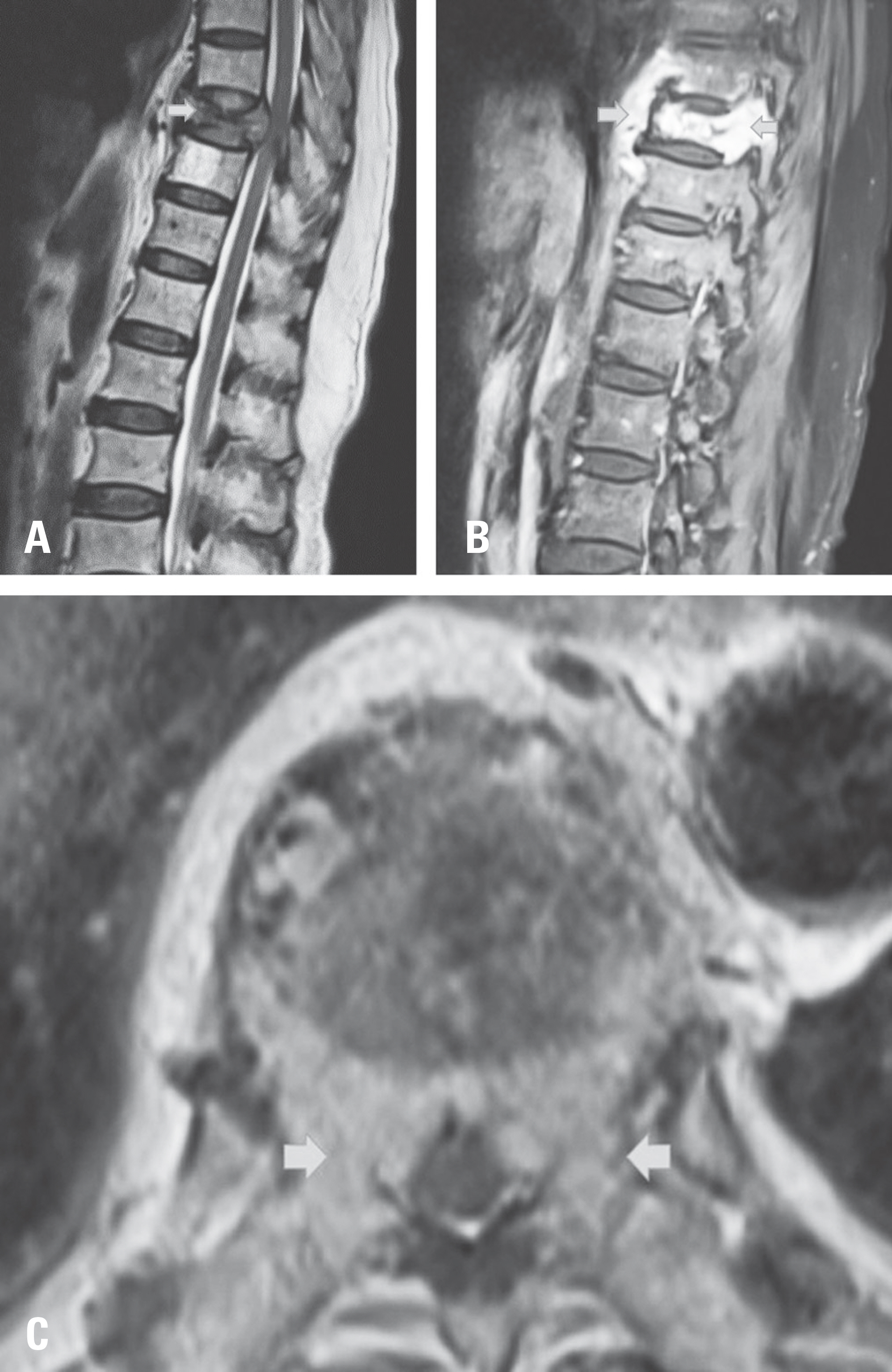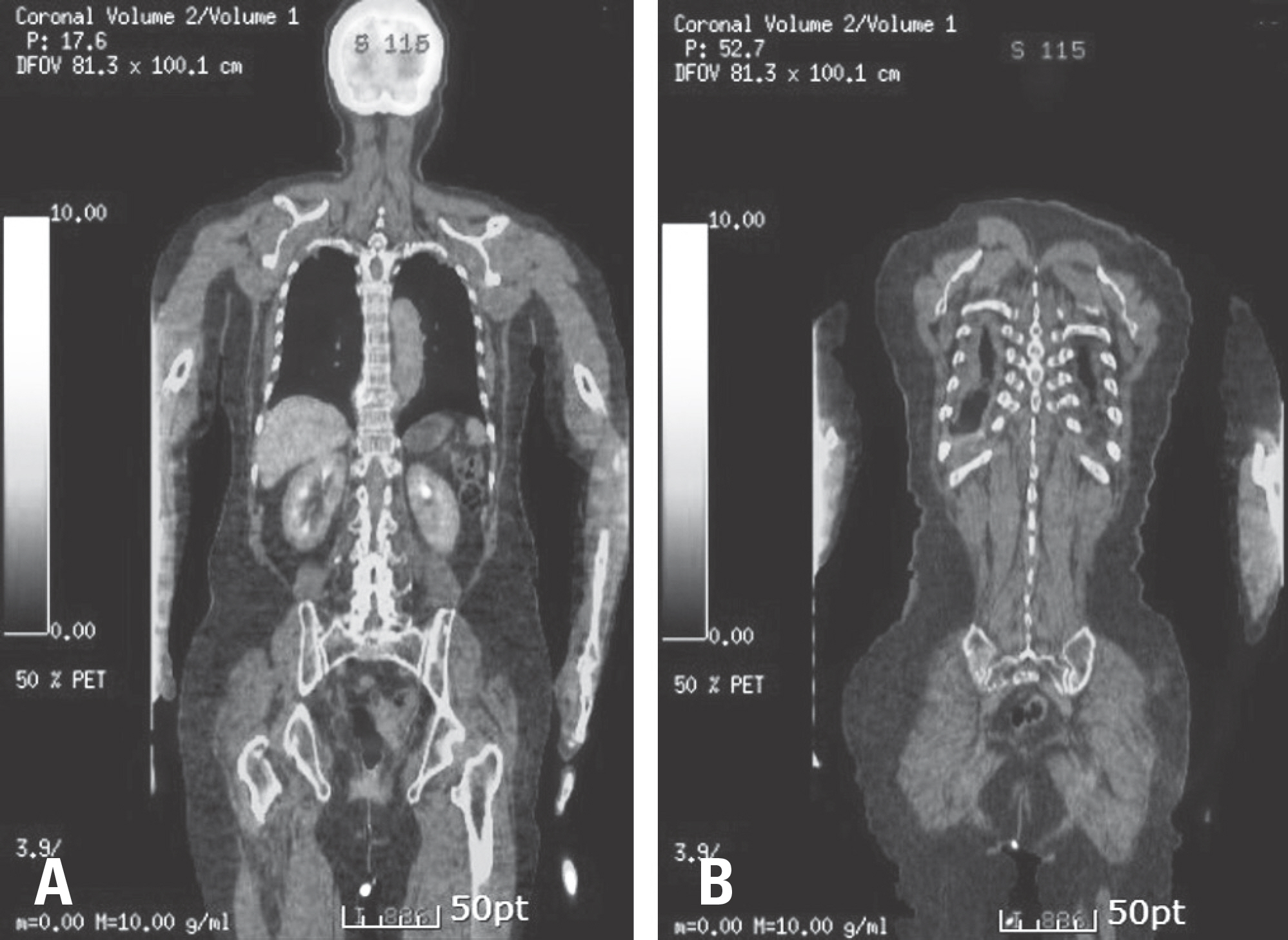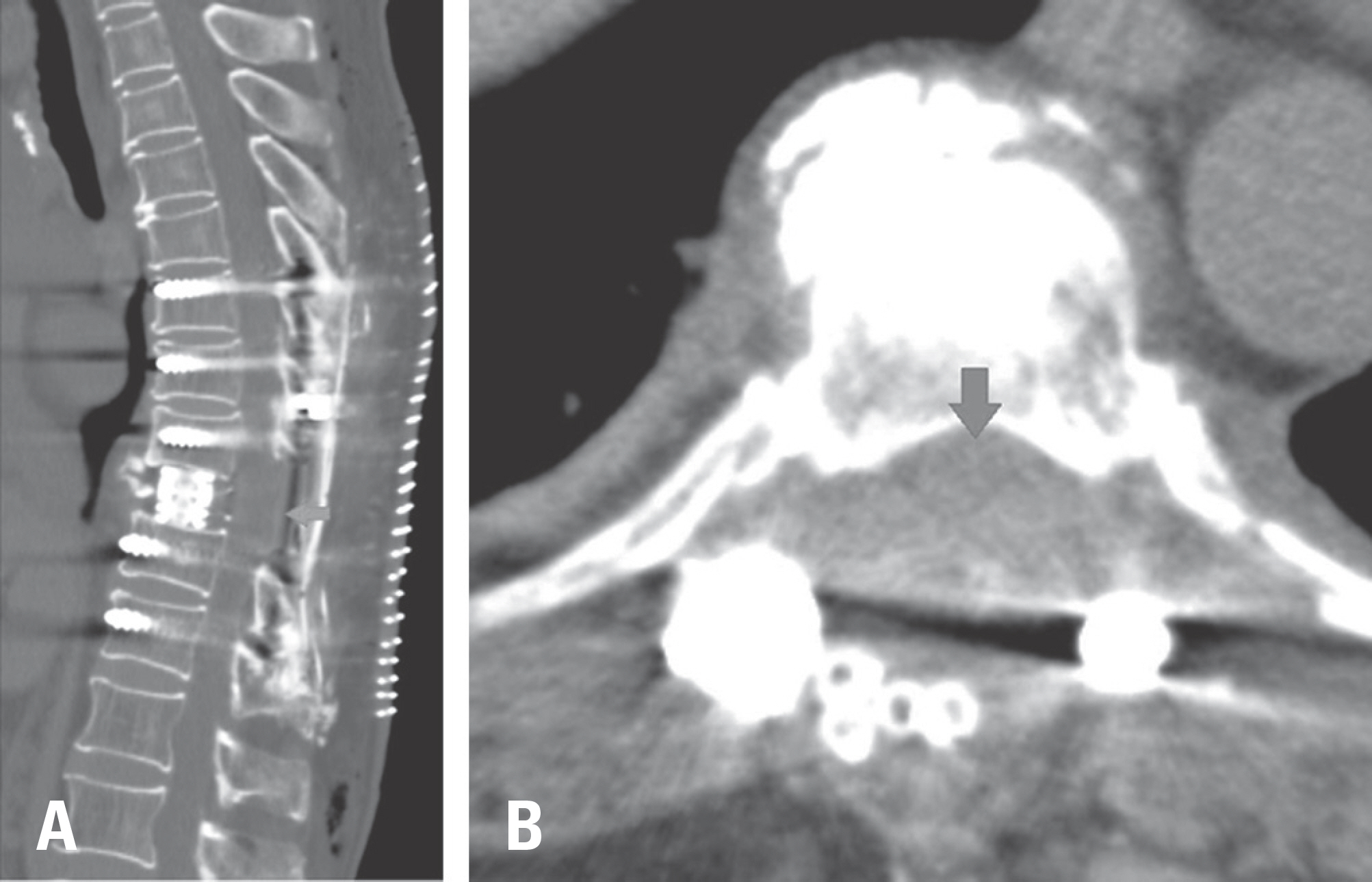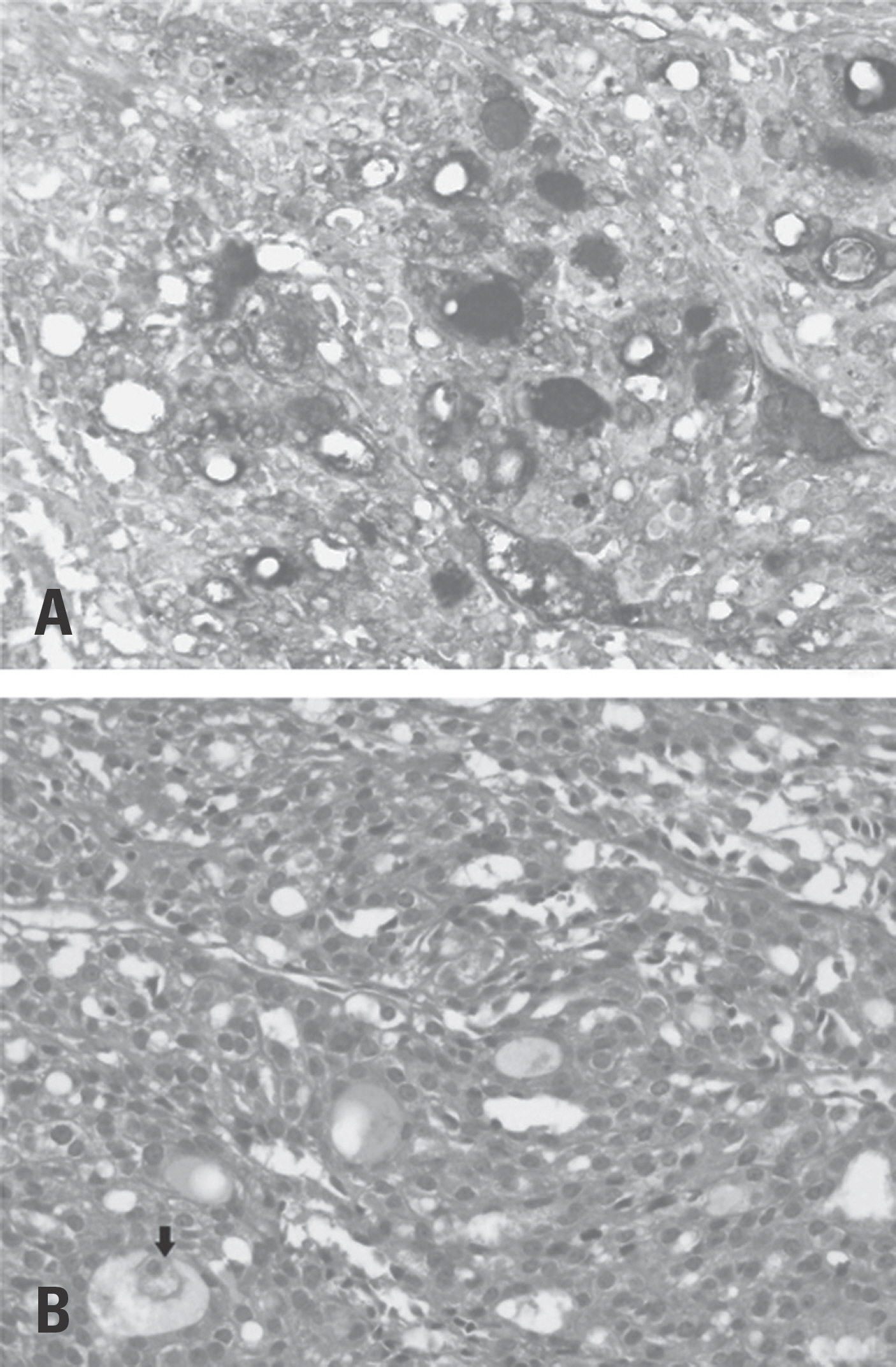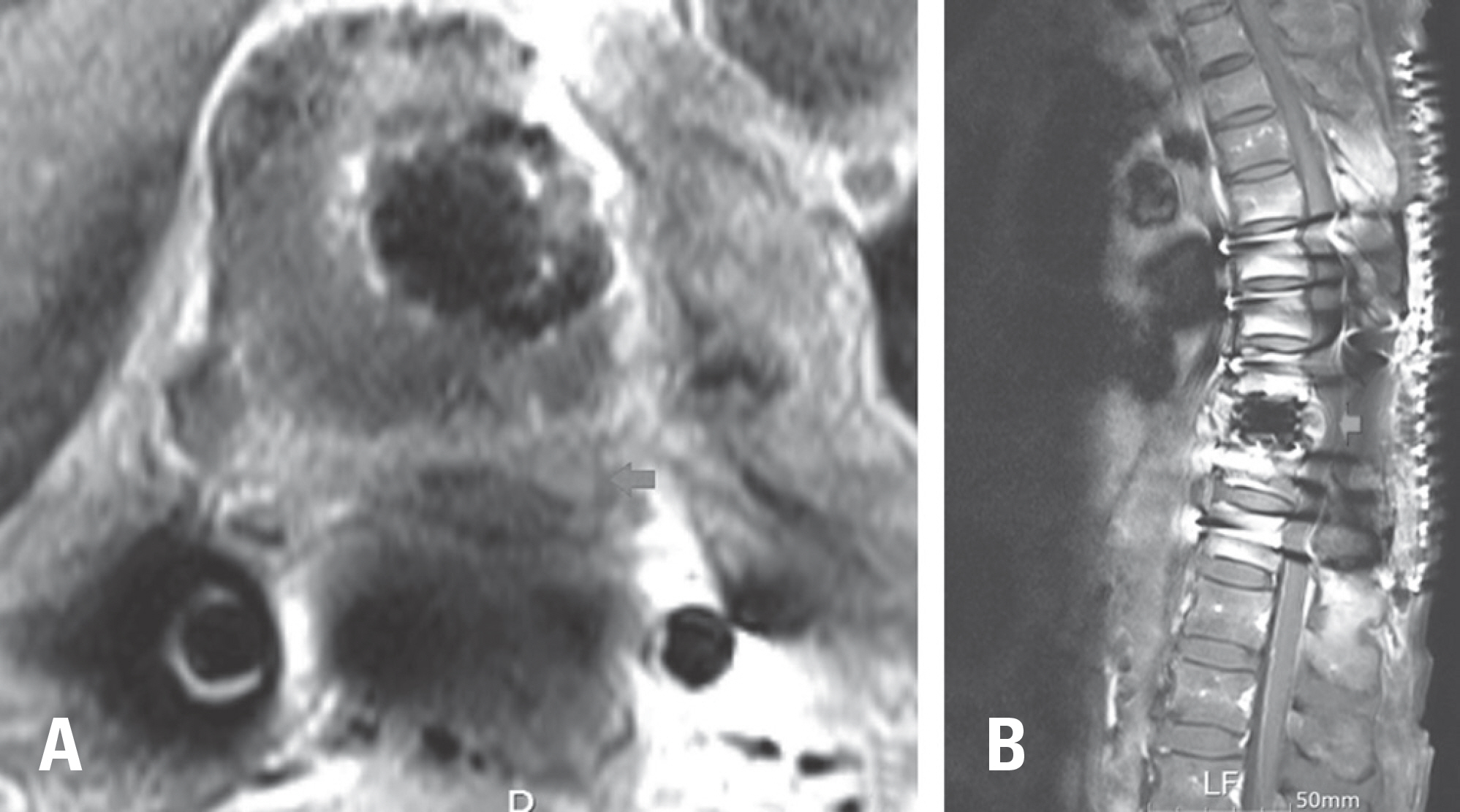J Korean Soc Spine Surg.
2019 Sep;26(3):94-99. 10.4184/jkss.2019.26.3.94.
Acute and Delayed Epidural Hematoma After Total Spondylectomy for a Metastatic Spinal Tumor: A Case Report
- Affiliations
-
- 1Department of Orthopedic Surgery, Inje University Ilsan Paik Hospital, Goyang-si, Gyeonggi-do, South Korea. I9701@paik.ac.kr
- KMID: 2459758
- DOI: http://doi.org/10.4184/jkss.2019.26.3.94
Abstract
- STUDY DESIGN: Case report.
OBJECTIVES
We report a case of recurrent spinal epidural hematoma after total spondylectomy for a metastatic spinal tumor. SUMMARY OF LITERATURE REVIEW: Postoperative epidural hematoma is rare, and no case of delayed epidural hematoma after hematoma removal has been reported.
MATERIALS AND METHODS
A 74-year-old woman experienced a ninth thoracic vertebral (T9) pathologic fracture caused by a metastatic spinal tumor and underwent total spondylectomy. Immediate postoperative epidural hematoma occurred and neurological symptoms appeared. After hematoma removal, the symptom improved. Ten days after surgery, the neurological symptoms worsened again. Spine magnetic resonance imaging showed delayed epidural hematoma. Hematoma removal was done again.
RESULTS
The patient's neurological symptoms improved after delayed hematoma removal.
CONCLUSIONS
Delayed hematoma that cause neurological symptoms may occur after primary hematoma removal. If neurological symptoms recur after hematoma removal, the surgeon should consider the possibility of hematoma recurrence. Before total spondylectomy surgery, preoperative embolization is recommended.
MeSH Terms
Figure
Reference
-
1. Aono H, Ohwada T, Hosono N, et al. Incidence of postoperative symptomatic epidural hematoma in spinal decompression surgery. J Neurosurg Spine. 2011 Aug; 15(2):202–5. DOI: 10.3171/2011.3.SPINE10716. Epub 2011 May 6.
Article2. Amiri AR, Fouyas IP, Cro S, et al. Postoperative spinal epidural hematoma (SEH): incidence, risk factors, onset. and management.Spine J. 2013 Feb; 13(2):134–40. DOI: 10.1016/j.spinee.2012.10.028. Epub 2012 Dec 5.3. Kim B, Moon SH, Kim SY, et al. Delayed Spinal Epidural Hematoma after En Block Spondylectomy for Vertebral Ewing's Sarcoma. Asian Spine J. 2010 Dec; 4(2):118–22. DOI: 10.4184/asj.2010.4.2.118. Epub 2010 Nov 24.
Article4. Uribe J, Moza K, Jimenez O, et al. Delayed postoperative spinal epidural hematomas. Spine J. 2003 Mar; 3(2):125–9. DOI: org/10.1016/S1529-9430 (02)00535-1.
Article5. Neo M, Sakamoto T, Fujibayashi S, et al. Delayed postoperative spinal epidural hematoma causing tetraplegia: case report. J Neurosurg Spine. 2006 Sep; 5(3):251–3. DOI: 10.3171/spi.2006.5.3.251.6. Sokolowski MJ, Dolan M, Aminian A, et al. Delayed epidural hematoma after spinal surgery: a report of 4 cases. J Spinal Disord Tech. 2006 Dec; 19(8):603–6. DOI: 10.1097/01.bsd.0000211242.44706.62.
Article7. Spanier DE, Stambough JL. Delayed postoperative epidural hematoma formation after heparinization in lumbar spinal surgery. J Spinal Disord. 2000 Feb; 13(1):46–9. DOI: 10.1097/00002517-200002000-00010.8. Awad JN, Kebaish KM, Donigan J, et al. Analysis of the risk factors for the development of ostoperative spinal epidural haematoma. J Bone Joint Surg Br. 2005 Sep; 87(9):1248–52. Doi; 10.1302/0301-620X.87B9.16518.9. Lawton MT, Porter RW, Heiserman JE, et al. Surgical management of spinal epidural hematoma: relationship between surgical timing and neurological outcome. J Neurosurg. 1995 Jul; 83(1):1–7. Doi; 10.3171/jns.1995.83.1.0001.
Article
- Full Text Links
- Actions
-
Cited
- CITED
-
- Close
- Share
- Similar articles
-
- Delayed Spinal Epidural Hematoma after En Block Spondylectomy for Vertebral Ewing's Sarcoma
- Thoracolumbar Epidural Hematoma Complicated by Cauda Equina Syndrome : Complication of Systemic Heparinization Following Epidural Anesthesia: A case report
- Cervical Epidural Hematoma Following a Facet Joint Nerve Block
- Drainage of an acute spinal epidural hematoma that developed without risk factors in the thoracic spine using epidural needle: A case report
- Epidural hematoma treated by aspiration after transforaminal epidural steroid injection - A case report -

